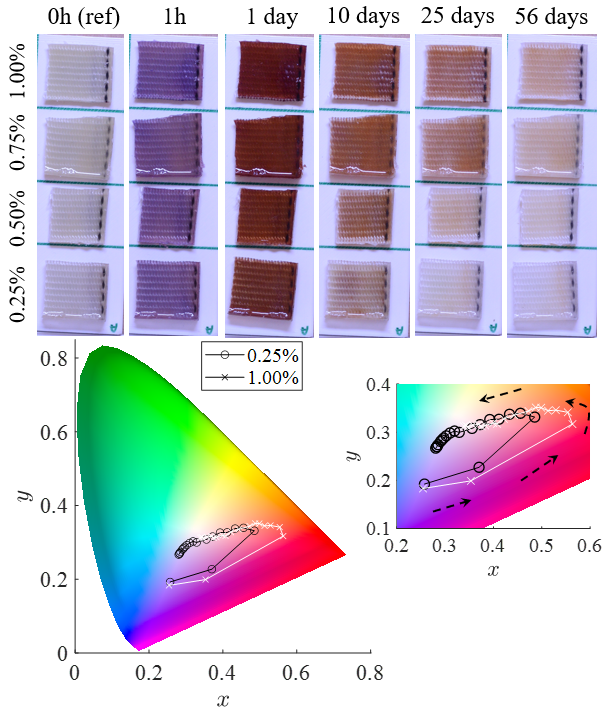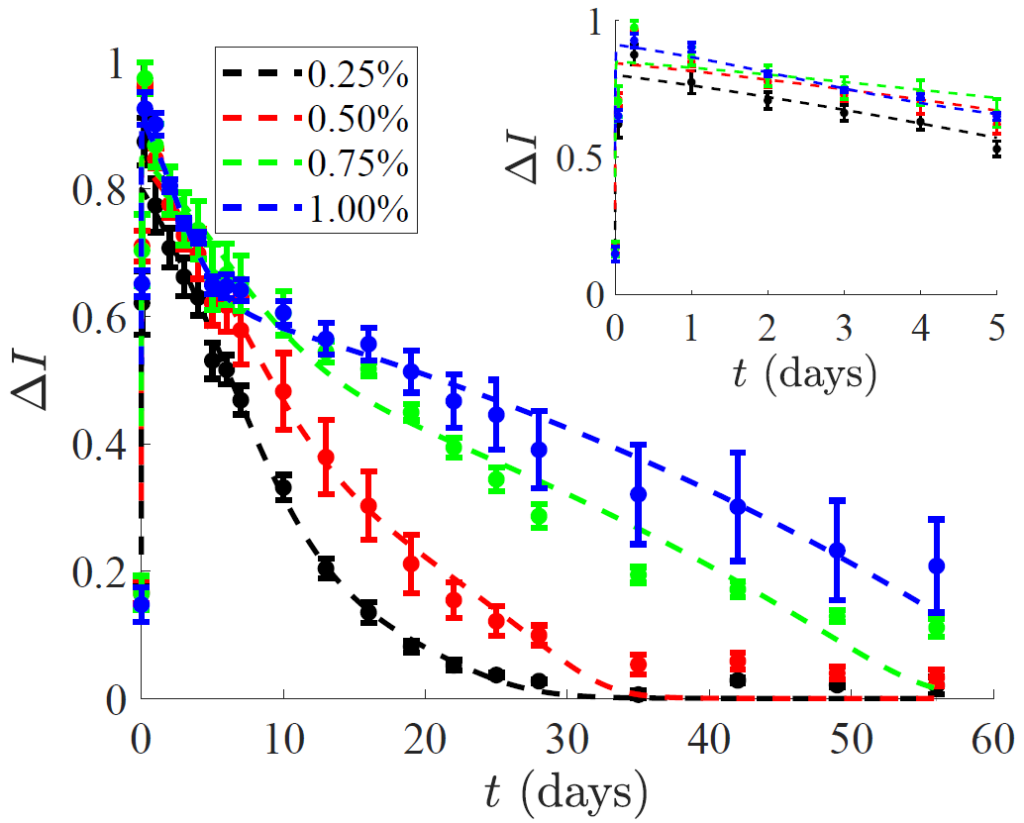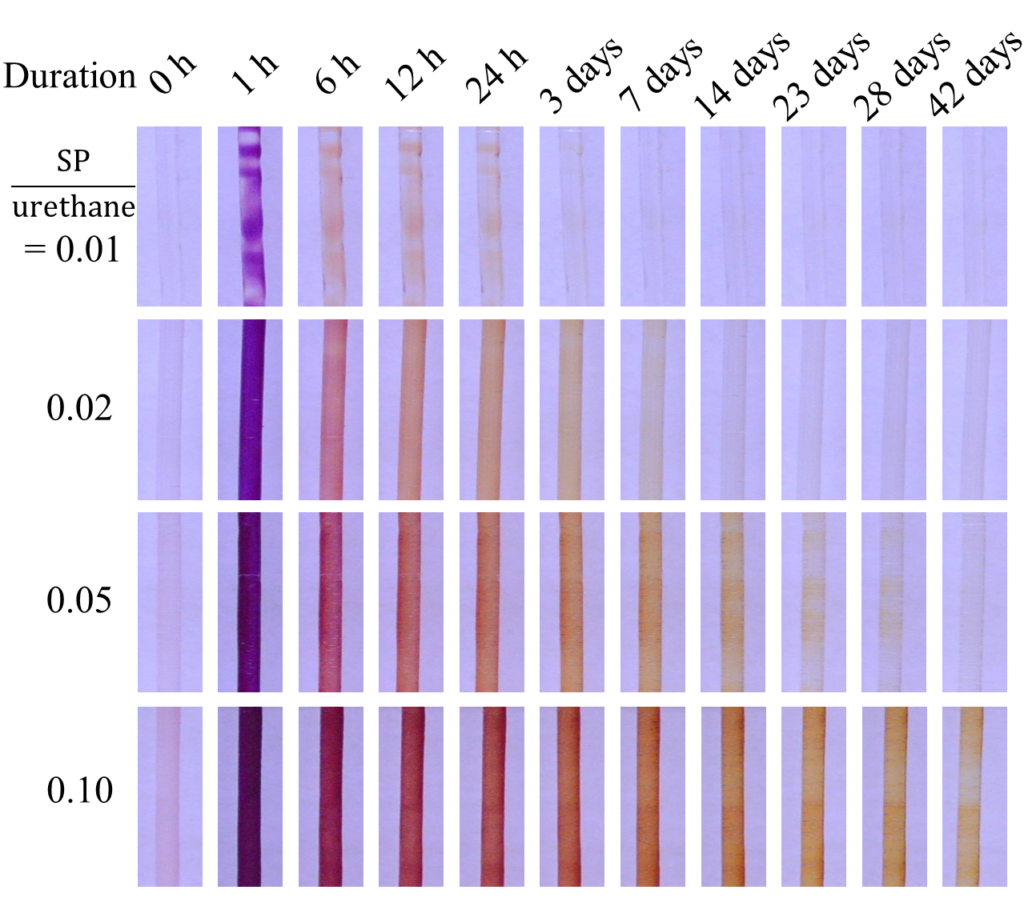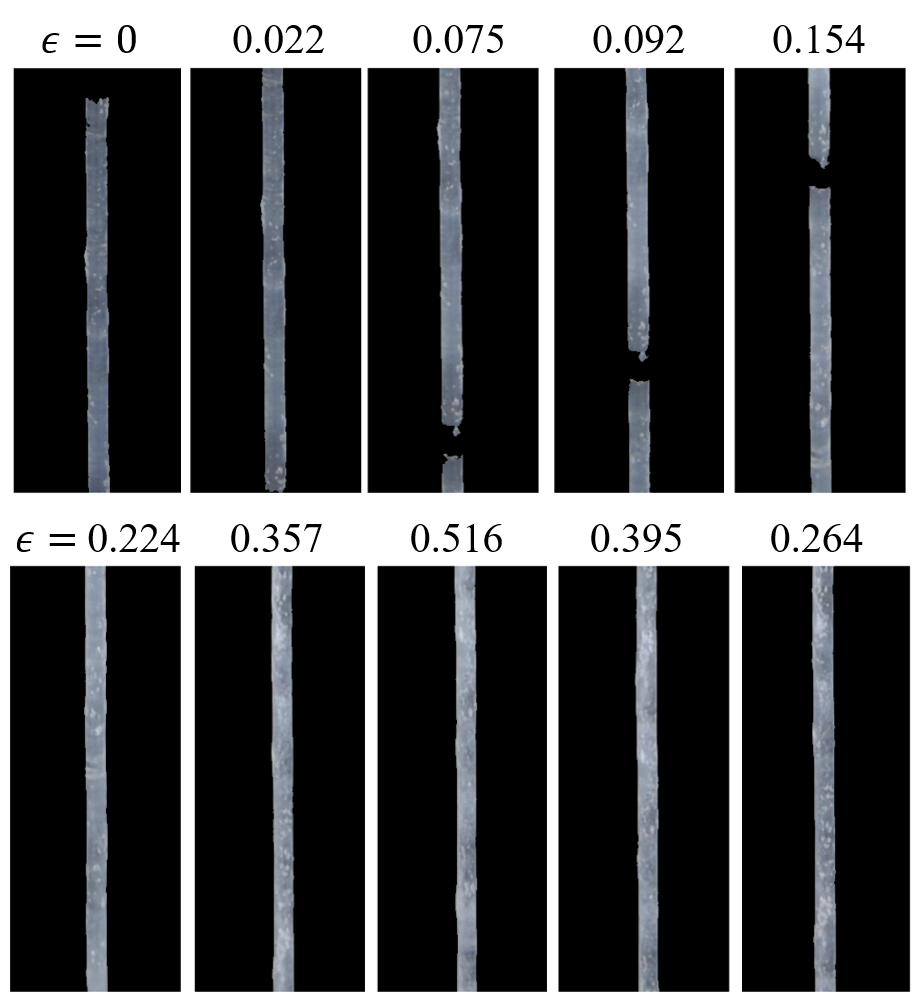

predictions of the variation in the darkness of the webbings
Webbing structures are extensively employed in engineering systems as load-bearing components. In a field setting, webbings are frequently subject to extended ultra-violet (UV) light irradiation, which can affect their integrity and reduce their mechanical strength. Despite technological advancements in structural health monitoring, long-term UV sensing techniques for webbings remain under-developed. To fill this gap, we proposed a photochromic nylon webbing that demonstrates color variation in response to extended UV exposure. The webbing offers a rich, yet controlled, color variation over multiple time scales that is conducive to UV sensing. A mathematical model grounded in photochemistry is developed to interpret experimental observations, unveiling the photochromic phenomenon as a multi-step, multi-time-scale photochemical process involving several chemical species. The model captures the evolution of the coexisting species through a system of nonlinear, coupled ordinary differential equations, offering the basis for the inference of the webbing’s color. The proposed photochromic webbing and the photochemistry-based mathematical model could inform future designs of UV-sensitive structures that maintain sensitivity under weeks of continuous sunlight UV exposure.


Building upon the photochromic webbings, we put forward a class of multifunctional filaments to facilitate the simultaneous sensing of an applied strain and UV irradiation. Multifunctional filaments are fabricated by attaching functional materials to the filaments’ surfaces through a pressurized coating process. UV-sensitivity is accomplished by a layer of photochromic materials coated on the filament. Upon UV irradiation, the photochromic filaments demonstrate a rich color variation that could support UV sensing. Strain-sensitivity is realized by a layer of photonic crystals coated on the filament. An applied strain modulates the closely packed nano-structures of the photonic crystals, leading to a shift in the filament color. We demonstrate that by incorporating photochromic materials and photonic crystals on the same filament, it is possible to accomplish simultaneous UV and strain sensing. These filaments have been embedded in webbings to enable noninvasive monitoring of their integrity. Experiments are underway to validate the performance of the filaments.
References
- Zhang, P., Ulbricht, N., Boldini, A., Ohanian, O., Porfiri, M., 2023: “Multifunctional nylon filaments for simultaneous ultra-violet light and strain sensing”, The European Physical Journal D, 77(3), 44.
- Zhang, P., Ohanian, O.J., Porfiri, M., 2022: “Spiropyran-functionalized photochromic nylon webbings for long-term ultraviolet light sensing”, Journal of Applied Physics, 132(6), 064504. (Featured on the cover of the issue)
- Zhang, P., Carrillo Segura, S., Boldini, A., Di Trolio, P., Ohanian, O.J., Porfiri, M., 2021: “A photochromic nylon webbing for ultra-violet light sensing”, Smart Materials and Structures, 30, 085015.